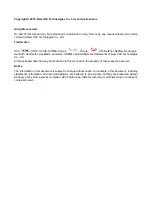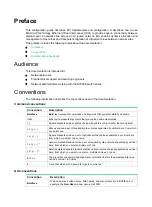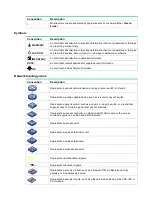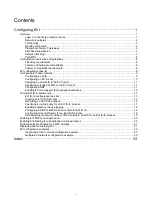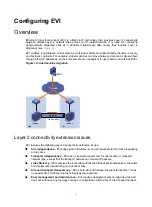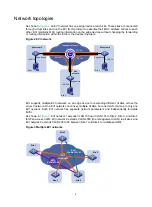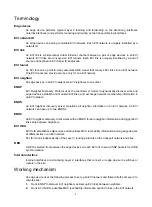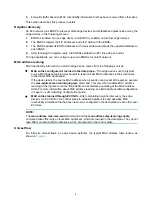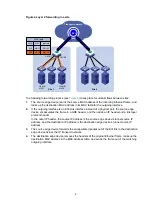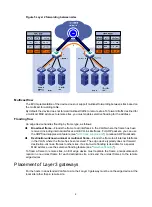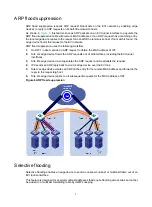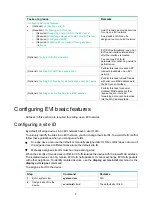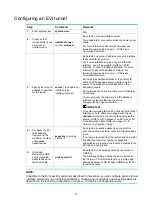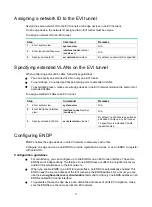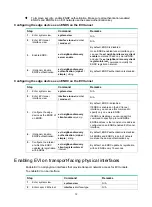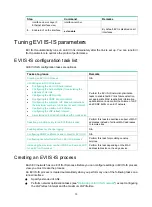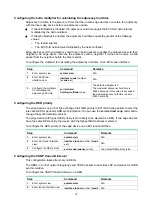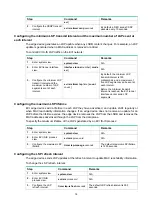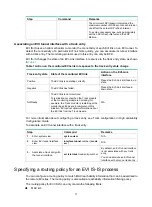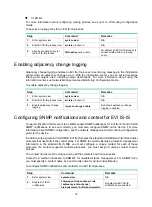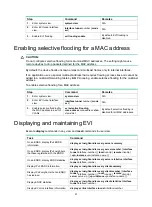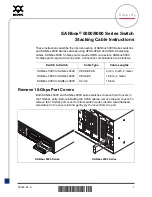
6
Figure 5 Layer 2 forwarding between sites
Multicast flow
The EVI implementation of the device does not support multicast forwarding between sites based on
the multicast forwarding table.
By default, the device does not forward multicast traffic to remote sites. To forward traffic destined for
a multicast MAC address to remote sites, you must enable selective flooding for the address.
Flooding flow
An edge device handles flooding by frame type, as follows:
•
Broadcast
frame
—Floods the frame to all interfaces in the VLAN where the frame has been
received, including internal interfaces and EVI-Link interfaces. For ARP packets, you can use
the ARP flood suppression feature (see "
") to reduce ARP broadcasts.
•
Destination-unknown unicast or multicast frame
—Floods the frame to all internal interfaces
in the VLAN where the frame has been received. The edge device typically does not forward
destination-unknown frames to other sites. If a site-to-site flooding is desirable for a special
MAC address, use the selective flooding feature (see "
").
To flood a frame to remote sites, an EVI edge device must replicate the frame, encapsulate each
replica in one unicast frame for each destination site, and send the unicast frames to the remote
edge devices.
Placement of Layer 3 gateways
For the hosts in an extended VLAN at a site, their Layer 3 gateway must be on the edge device at the
local site rather than a remote site.


